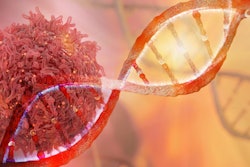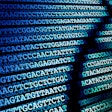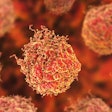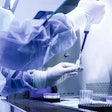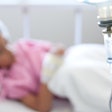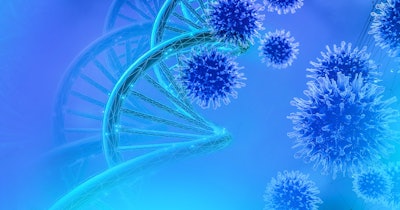
Biomedical engineers have developed a new gene-based approach which can be used on test strips for rapid, on-the-spot disease detection with accuracy comparable to that of lab-based polymerase chain reaction (PCR) tests.
Writing in Nature Communications, the team from University of New South Wales in Sydney (UNSW) and the Garvan Medical Research Institute described the process by which they created small circular DNA nanostructures approximately 2 nanometers in size that contained a short sequence of the target DNA. These DNA nano-circles and the tested sample are then mixed with CRISPR/Cas12a proteins. These proteins were programmed by the UNSW team to cut the DNA of the nano-circles, but only when activated by DNA from the target. The team used samples of the COVID-19 virus and Helicobacter pylori as targets.
The approach results in a molecular chain reaction: “…an Autocatalytic Cas12a Circular DNA Amplification Reaction (AutoCAR) system is established which allows a single nucleic acid target to activate multiple ribonucleoproteins, and greatly increases the achievable reporter cleavage rates per target,” the authors wrote.
“The interaction of a suitably programmed CRISPR/Cas protein with the gene target we are trying to detect causes the DNA nano-circles to break up, linearize, and become ‘fake targets’,” co-author Dr. Yi Li of UNSW explained in a statement. “We unleash a huge cascade of fake targets which is easy to detect with the testing strips, even if only a few molecules of the original gene target are present.”
Co-author Ewa Goldys of UNSW says the new technique is akin to having “PCR in your pocket”; she noted that the approach has potential for a range of applications in different areas—including biosecurity, environmental science, and agriculture, among others—and has already attracted interest from different industries.
She also noted a possible use for the biosensing strips in detecting cancer cells.
“In our published study, we were also able to detect cancer mutations in patients’ samples in a clinical setting. We hope this will open a path towards universal monitoring of patients undergoing cancer therapies.”




